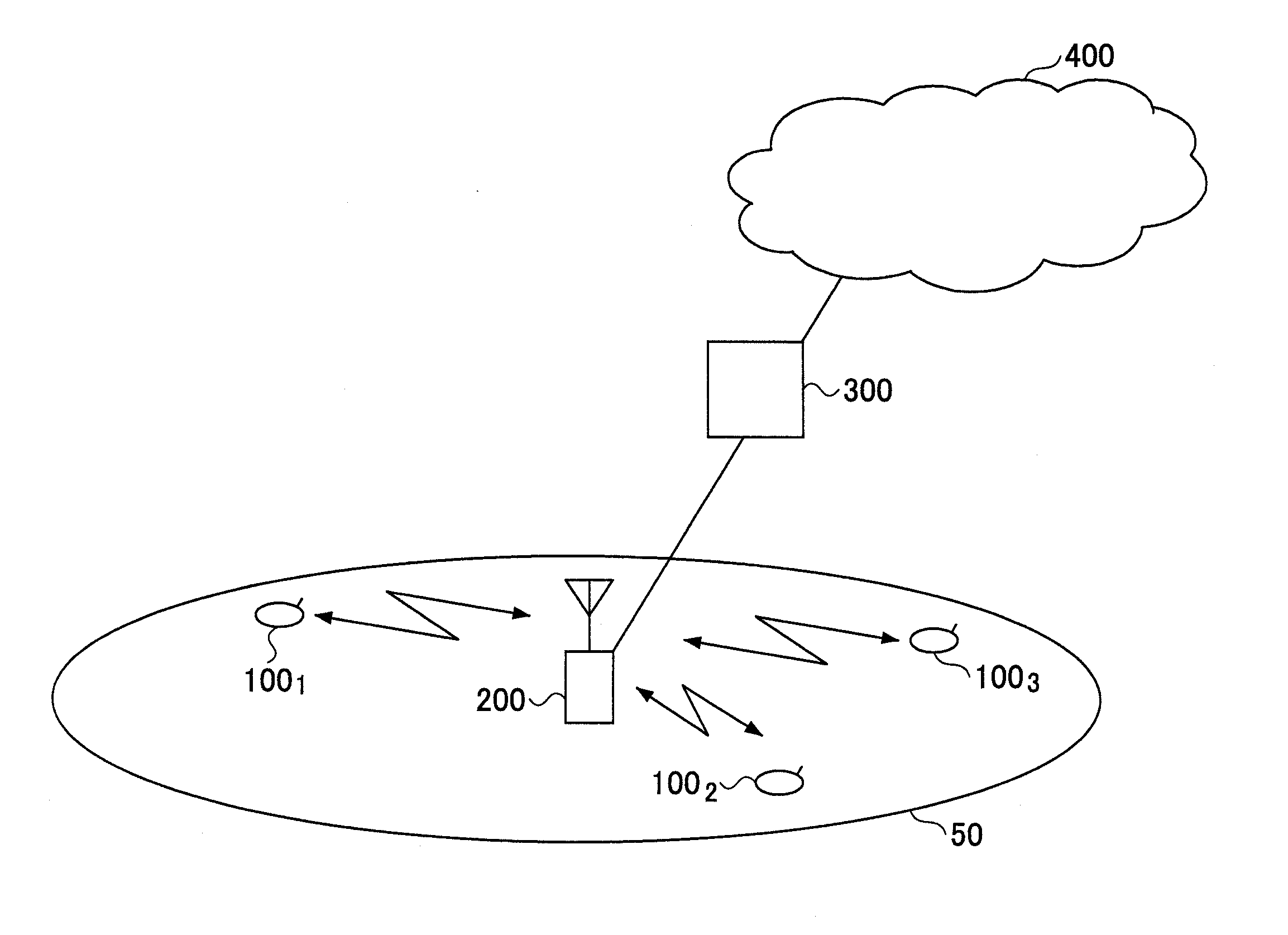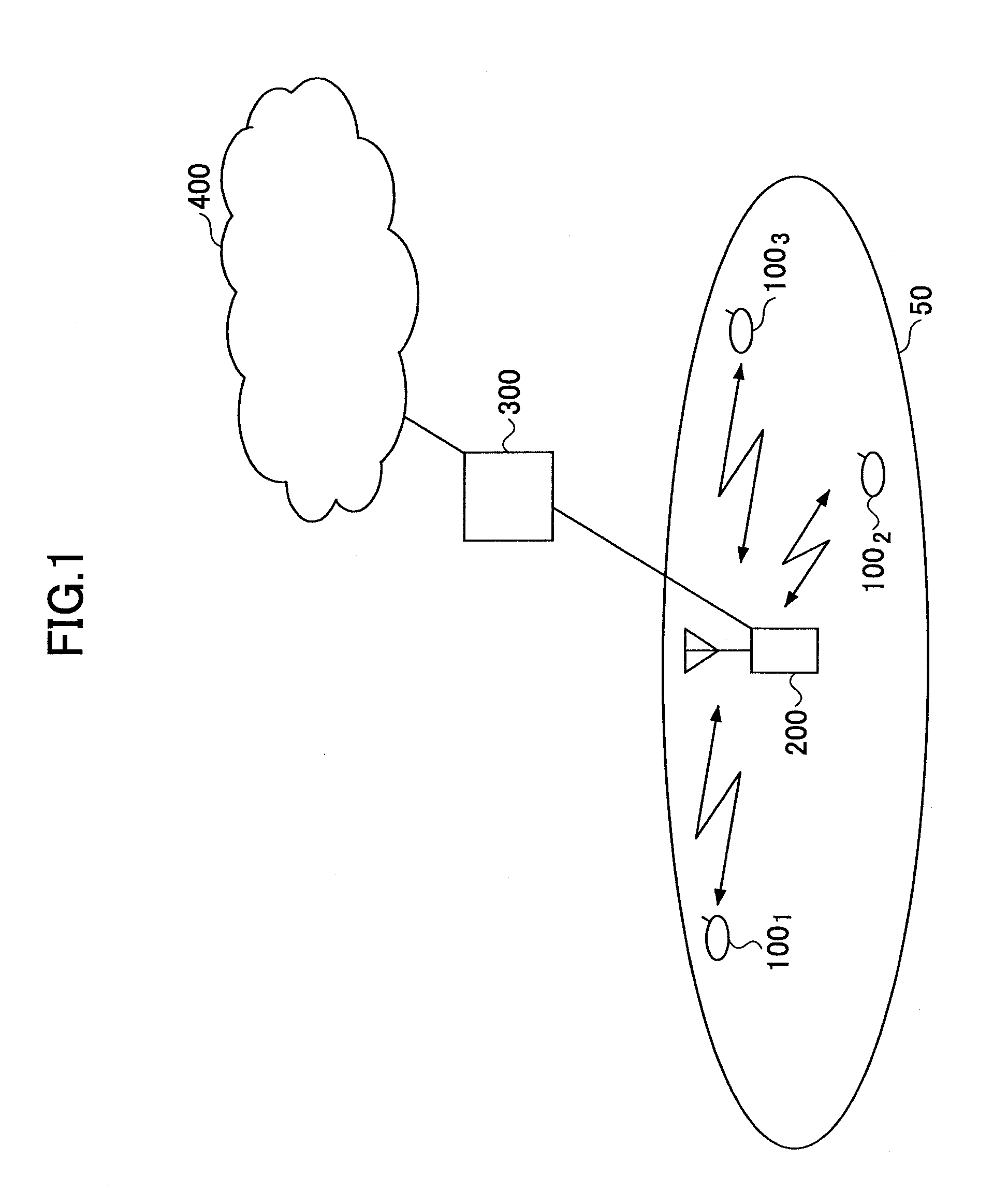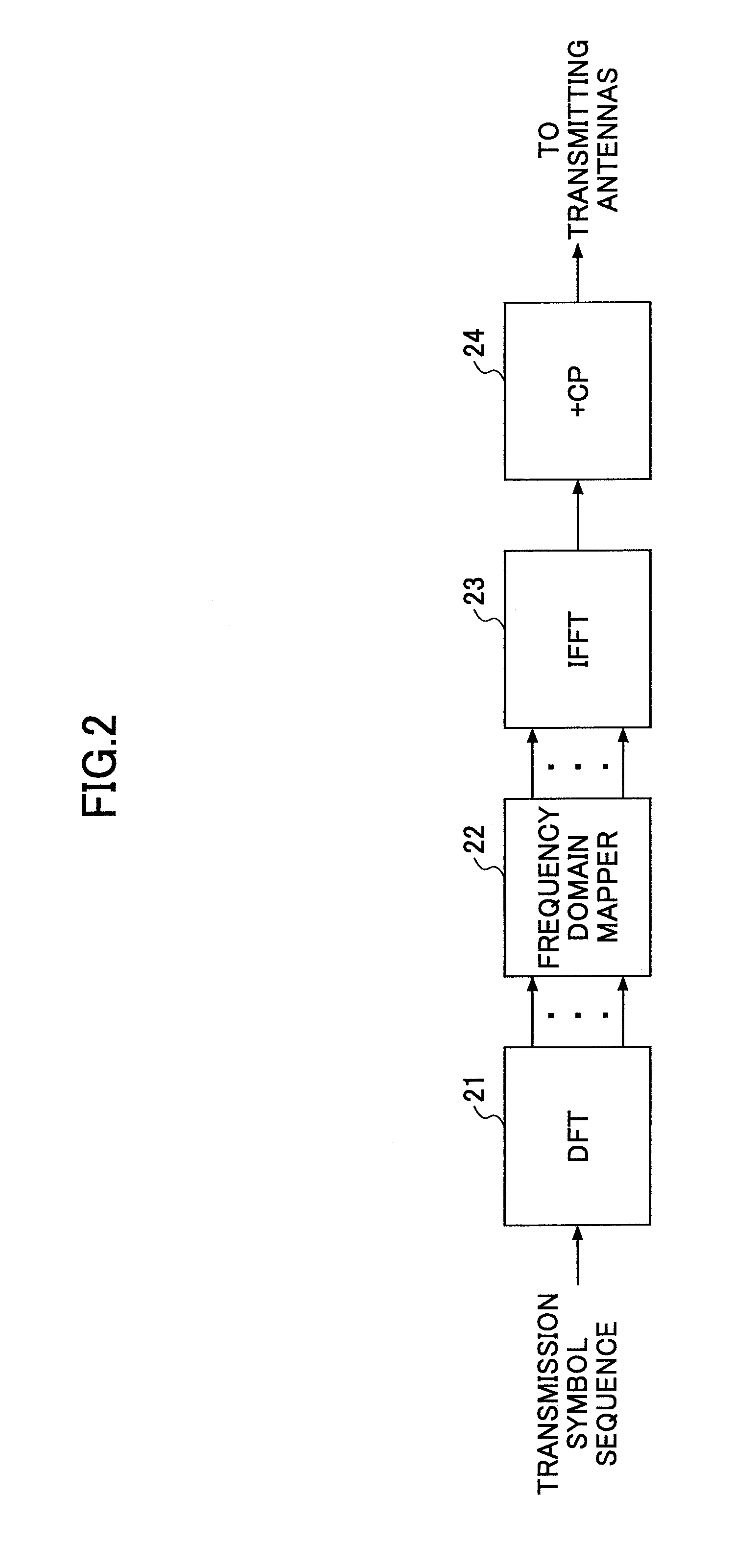Mobile communication system, receiving device, and method
a mobile communication system and receiving device technology, applied in the field of mobile communication technologies, can solve the problems of increasing multipath interference, multipath interference becoming particularly prominent, and multipath interference tending to occur, so as to improve signal detection accuracy
- Summary
- Abstract
- Description
- Claims
- Application Information
AI Technical Summary
Benefits of technology
Problems solved by technology
Method used
Image
Examples
first embodiment
1. System
[0058]FIG. 1 shows a mobile communication system according to an embodiment of the present invention. As shown in FIG. 1, the mobile communication system includes a cell 50, user devices 1001, 1002, and 1003 (may be collectively called the user device 100) in the cell 50, a base station 200, an access gateway 300, and a core network 400. In this embodiment, it is assumed that one or more of the user devices 1001, 1002, and 1003 perform radio communications with the base station 200 according to a MIMO scheme. The user device 100 is typically a mobile station, but may instead be implemented as a fixed station. It is also assumed that the mobile communication system employs SC-FDMA (or DFT-spread OFDM) for uplink. Alternatively, the mobile communication system may employ SC-FDMA for downlink.
2. Transmitting Device
[0059]FIG. 2 shows a transmitting device for the mobile communication system of this embodiment. In this embodiment, it is assumed that the transmitting device is in...
PUM
 Login to View More
Login to View More Abstract
Description
Claims
Application Information
 Login to View More
Login to View More - R&D
- Intellectual Property
- Life Sciences
- Materials
- Tech Scout
- Unparalleled Data Quality
- Higher Quality Content
- 60% Fewer Hallucinations
Browse by: Latest US Patents, China's latest patents, Technical Efficacy Thesaurus, Application Domain, Technology Topic, Popular Technical Reports.
© 2025 PatSnap. All rights reserved.Legal|Privacy policy|Modern Slavery Act Transparency Statement|Sitemap|About US| Contact US: help@patsnap.com



